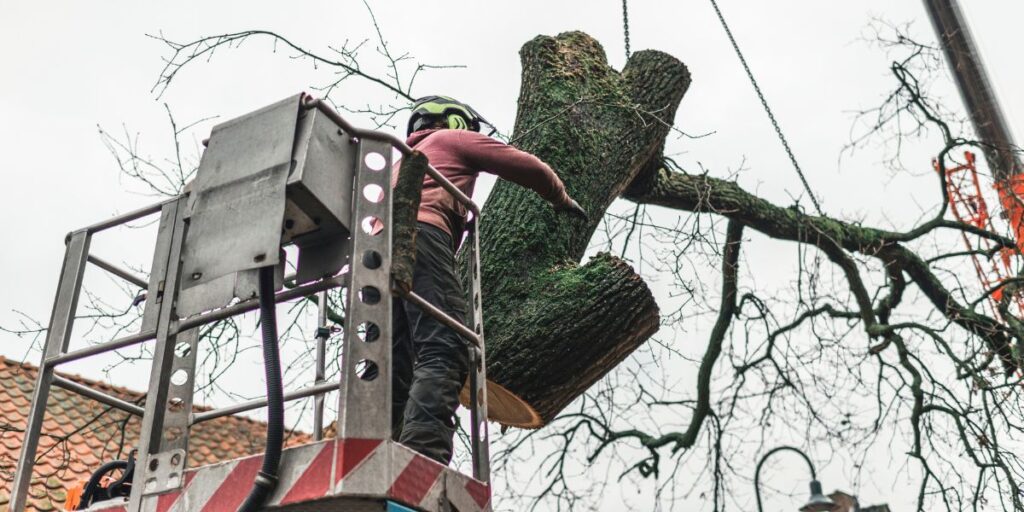Introduction
Emergency tree services provide critical support during storms and other natural events. These services include fast removal of fallen or damaged trees, clearing debris, and eliminating hazards that threaten people and property. Available 24 hours a day, seven days a week, emergency crews use specialized equipment and trained professionals to respond quickly and safely. This article explains the scope of emergency tree services, the process of storm damage cleanup, hazard removal techniques, safety measures, and the benefits of hiring qualified experts.
What Are Emergency Tree Services?
Definition and Scope of Emergency Tree Services
Emergency tree services involve urgent tree removal, storm damage assessment, and debris removal after storms or hazardous events. These services require rapid response and the use of specialized equipment to ensure safety and minimize further damage. Professionals quickly evaluate and address risks posed by unstable or fallen trees, preventing harm to people and property brighton tree service.
Common Situations Requiring Emergency Tree Services
Situations that demand emergency tree services include fallen trees, broken branches, extensive storm damage, and root failure. The urgency depends on the level of risk to property and public safety. Prompt removal or stabilization of hazardous trees reduces potential accidents and structural damage.
Storm Damage Cleanup Process
Initial Damage Assessment and Risk Evaluation
The cleanup process begins with a thorough site inspection to identify hazards and assess structural damage. Evaluating tree stability helps prioritize work and informs safe removal strategies. Accurate risk evaluation guides effective and efficient response.
Safe Removal and Debris Management
Removal uses chainsaws, cranes, and wood chippers to control cutting and manage debris. Controlled cutting limits damage to surrounding areas while hauling removes debris safely. This approach minimizes hazards during cleanup and supports environmental responsibility.
Post-Cleanup Site Restoration
After removal, services like stump grinding, soil treatment, and replanting restore the landscape. These steps improve the site’s appearance and prevent future issues such as pest infestations or soil erosion, promoting long-term recovery.
Hazard Tree Identification and Removal
Signs of Hazardous Trees and Limbs
Hazardous trees often show cracked branches, leaning trunks, or root damage. These signs indicate reduced stability or disease presence, increasing the risk of failure. Early detection of hazards is critical to prevent accidents.
Professional Techniques for Hazard Removal
Professionals use techniques such as cabling and bracing to stabilize trees when possible, preserving them safely. When removal is necessary, precise cutting with appropriate safety equipment ensures risk reduction. These methods balance tree preservation with safety.
Safety Protocols in Emergency Tree Services
Certified Arborists and Trained Crews
Emergency tree services are conducted by ISA-certified arborists and crews trained to follow OSHA safety standards. Proper training and strict safety procedures reduce the chance of injuries and uphold professional standards during operations.
Use of Personal Protective Equipment and Advanced Tools
Crews use helmets, harnesses, chainsaws, and cranes maintained regularly to protect workers and enable efficient work. The correct safety gear and equipment condition are essential for worker protection and smooth operations.
Managing Environmental and Property Safety
Traffic control measures and debris containment prevent collateral damage to nearby property and ensure public safety. Compliance with regulations maintains order around work sites and minimizes risks to the community.
Benefits of Hiring Professional Emergency Tree Services
Fast and Reliable Response Times
Professional services operate 24/7 with rapid mobilization to address hazards immediately. Quick action helps prevent further damage and offers peace of mind to property owners.
Comprehensive Cleanup and Damage Prevention
Complete debris removal and site restoration reduce the chance of secondary damage from pests or decay. These services improve overall property safety and maintain landscape health.
Insurance Assistance and Liability Coverage
Licensed providers carry worker’s compensation and liability insurance. This coverage manages risks for clients, ensuring financial protection and professional accountability.
How to Choose the Right Emergency Tree Service Provider
Checking Credentials and Emergency Experience
Reliable providers have proper licensing, relevant certifications, and experience handling emergency tree removals. These qualifications demonstrate expertise and trustworthiness.
Availability and Response Capabilities
Providers offering 24/7 services with ready equipment ensure timely intervention in emergencies. Prompt availability is critical to managing risks effectively.
Transparent Pricing and Clear Communication
Upfront estimates and clear service guarantees foster trust and customer satisfaction. Transparent pricing prevents surprises and allows informed decision-making.

